NMEA 2000 networks can be frustrating as evidenced by the amount of times I help troubleshoot them. Actisense has come out with a small piece of hardware that is a new take on something old, and adds the utility of being universal.
The two most common issues I see with NMEA 2000 networks are inadequate power, or poor/bad/no termination of the bus. Both of these things will cause instability for the devices on the network, and many other ancillary “weird” issues.
Low voltage is usually an issue at one end of the bus, where the length of the wiring has caused a voltage drop. This results in devices in that section behaving erratically, or not “seeing” devices elsewhere on the bus reliably. In extreme cases, it can result in devices powering off or rebooting, especially when other large loads kick on, such as a windlass.
Poor termination can happen from a missing terminator, a bad terminator, or termination in the wrong place in the bus. This results in a myriad of issues, but all coming back to things not “seeing” each other, or really erratic data and behavior.
One way to solve these issues is a NMEA 2000 tester – either an expensive one like the Maretron N2K Tester, or a simple one made of a NMEA 2000 cable and a voltage tester. You can read more about how to test a NMEA 2000 network and the tools for it below.

Actisense have come up with a rather innovative way to do some basic validation using a single device that becomes part of your NMEA 2000 network.
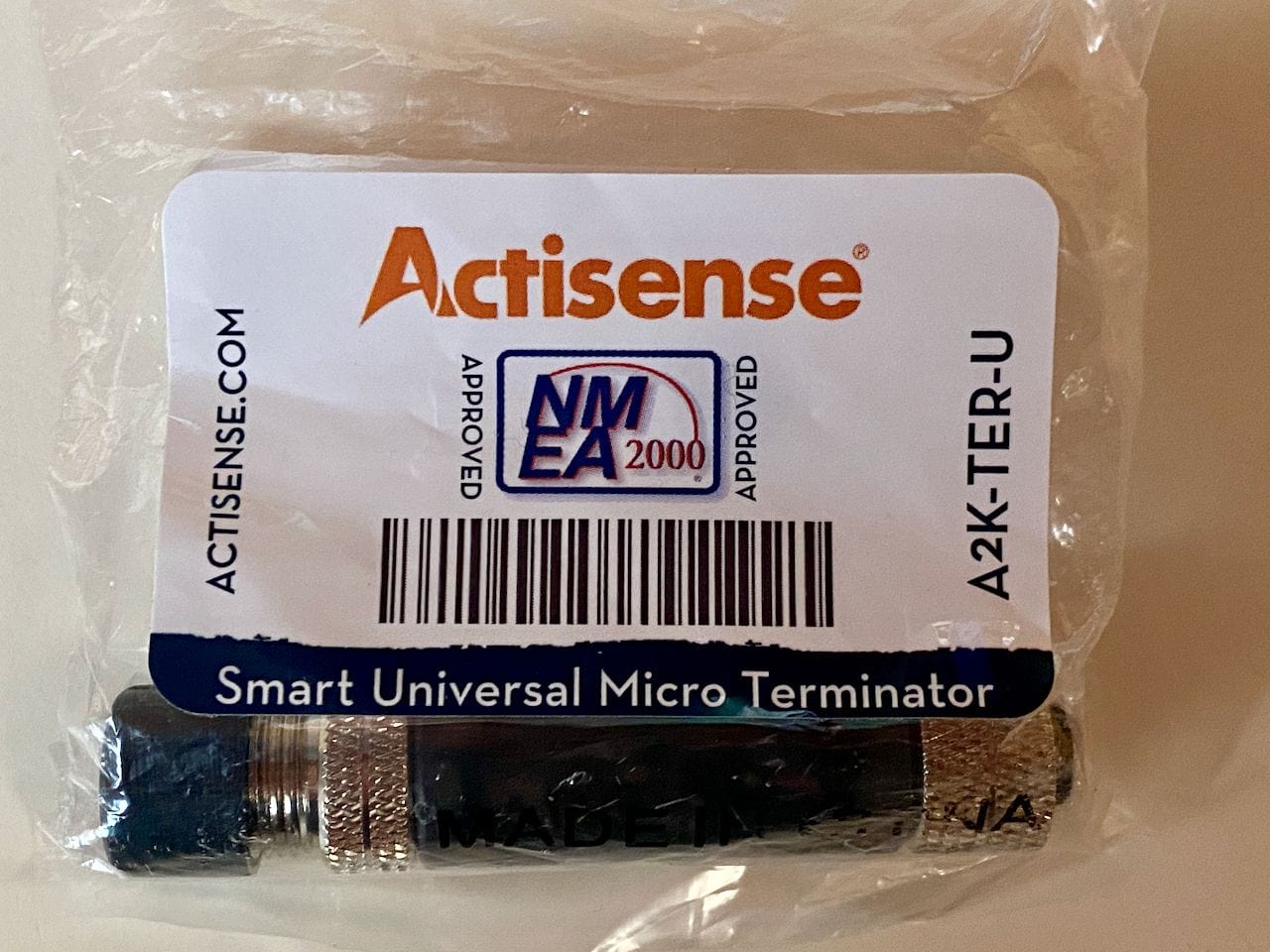
This is the Actisense Smart Universal Micro Terminator, part number A2K-TER-U. You can find them at various places online including Navstore in the US.
The terminator is universal, meaning it can be used in a female or male configuration, and has an LED indicating whether your bus has power, and if the power is above 9V.
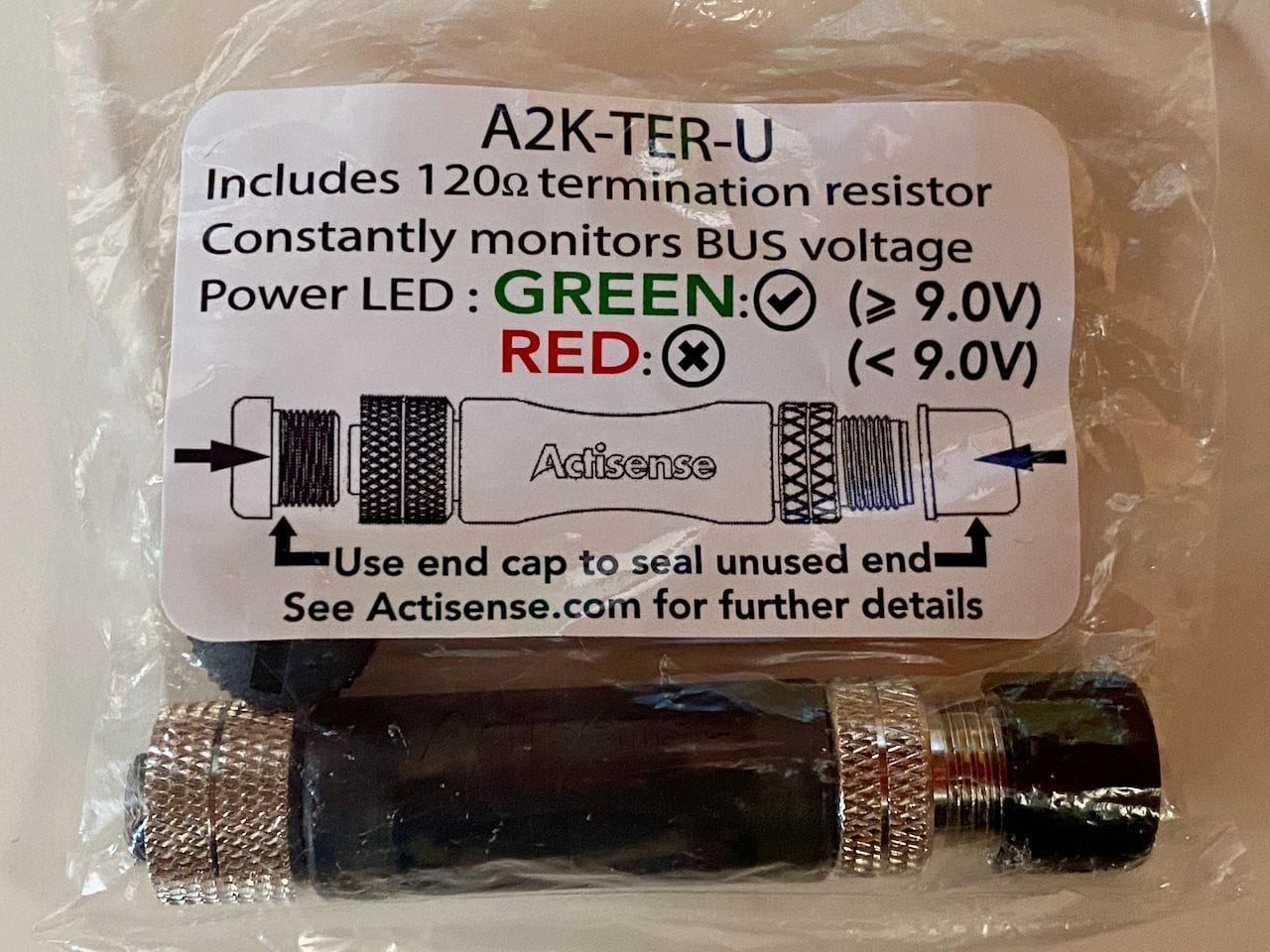
They are more expensive than a traditional terminator, but I think they are worth the money. Documentation is on the back of the included bag, and shows both how they are universal, and the lighting used to indicate voltage.
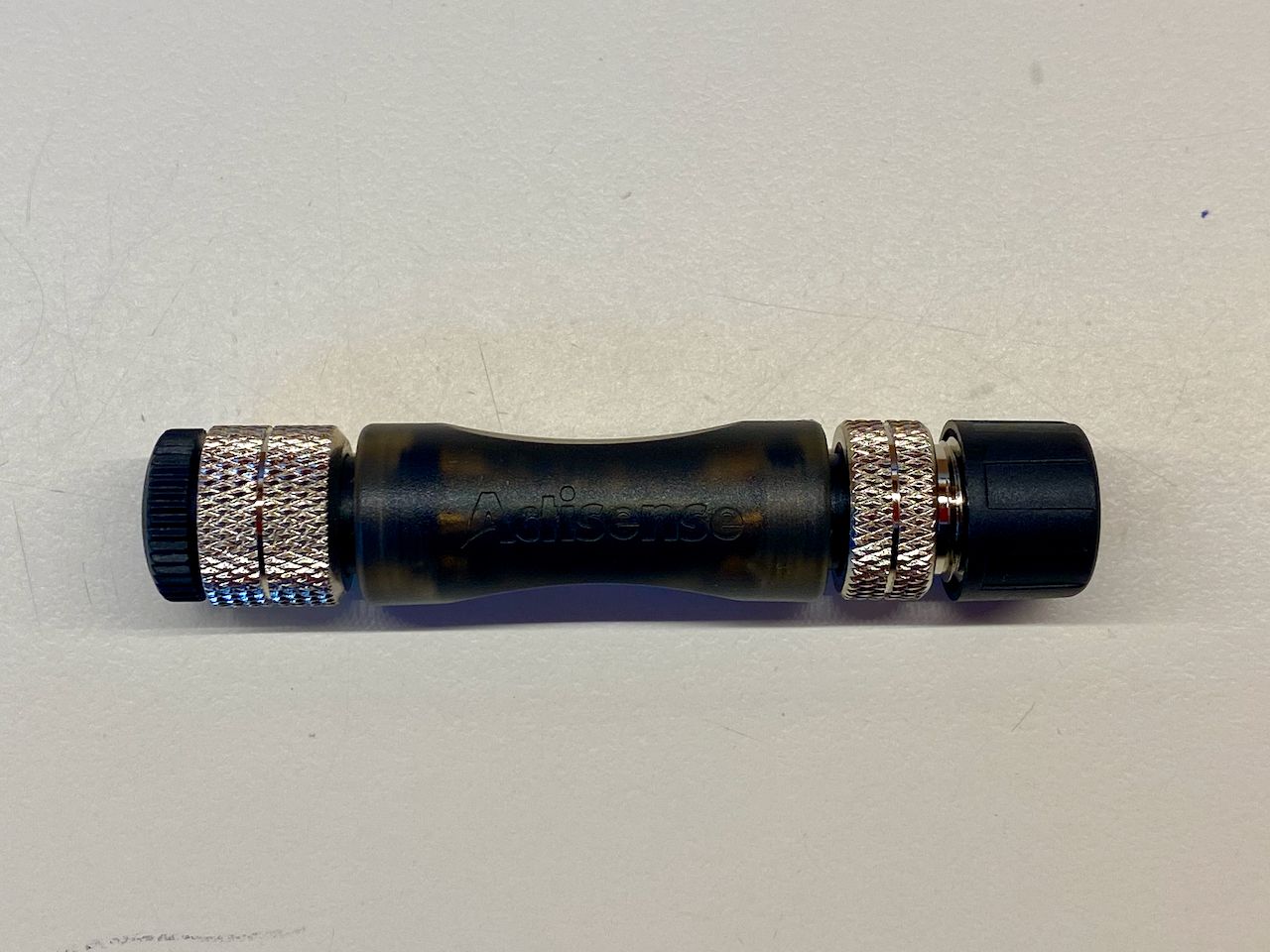
As is usual from Actisense, the terminator is made using quality plastic and stainless, and seems well built in general.
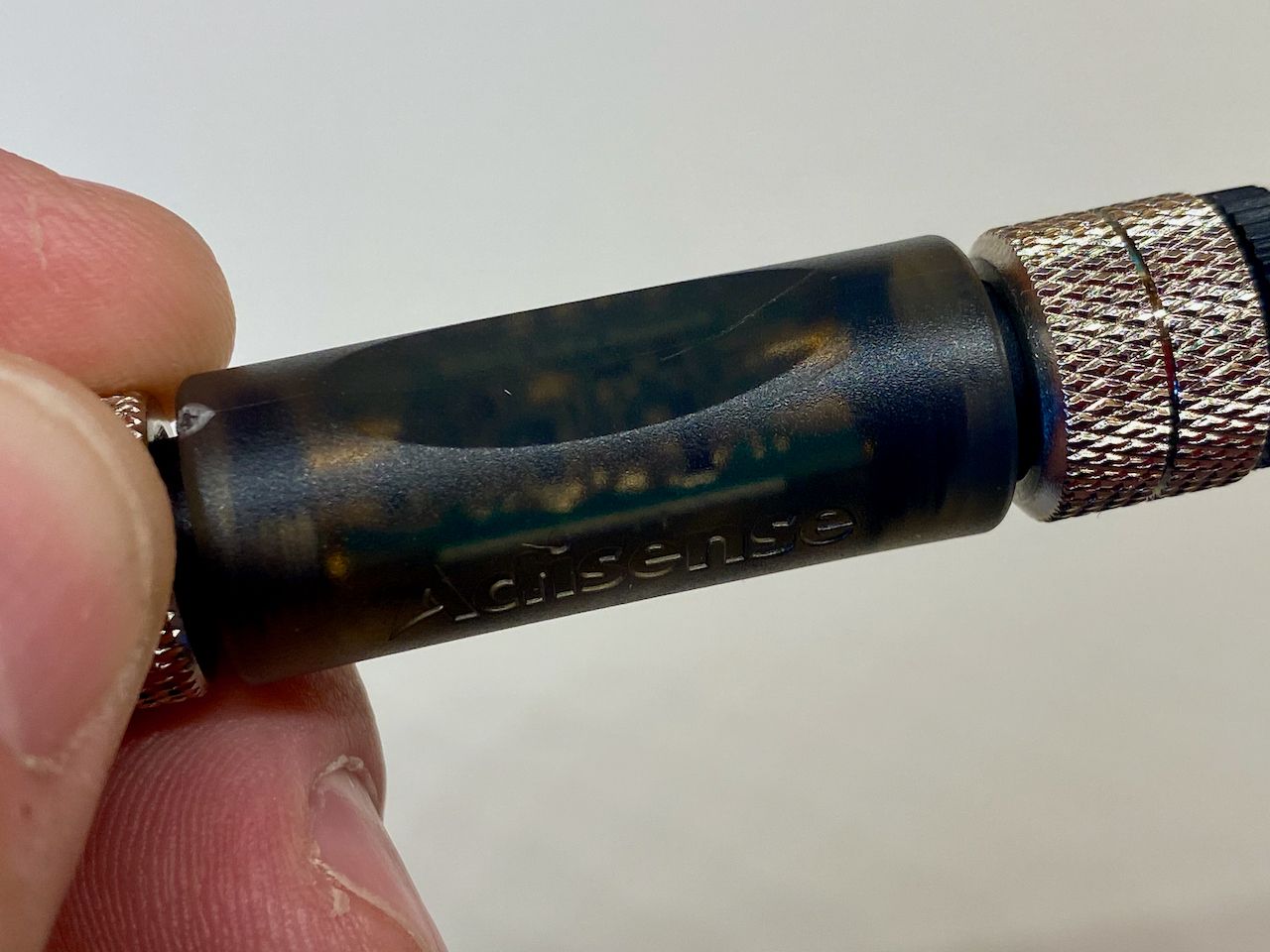
You can see a bit of a circuit board inside that is likely responsible for switching the termination from one end to the other, and generating the LED lighting based on voltage detected.
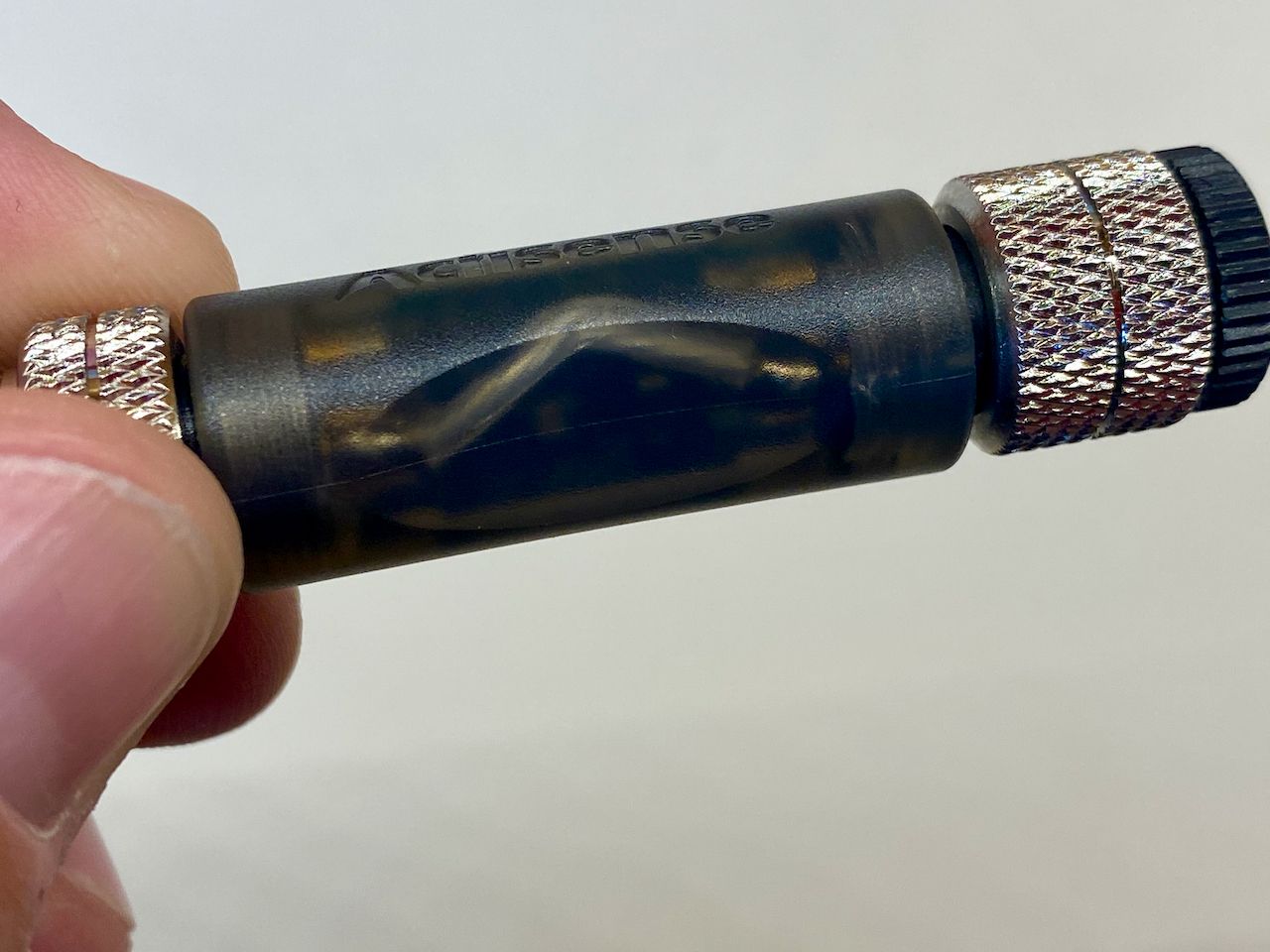
Universal ends
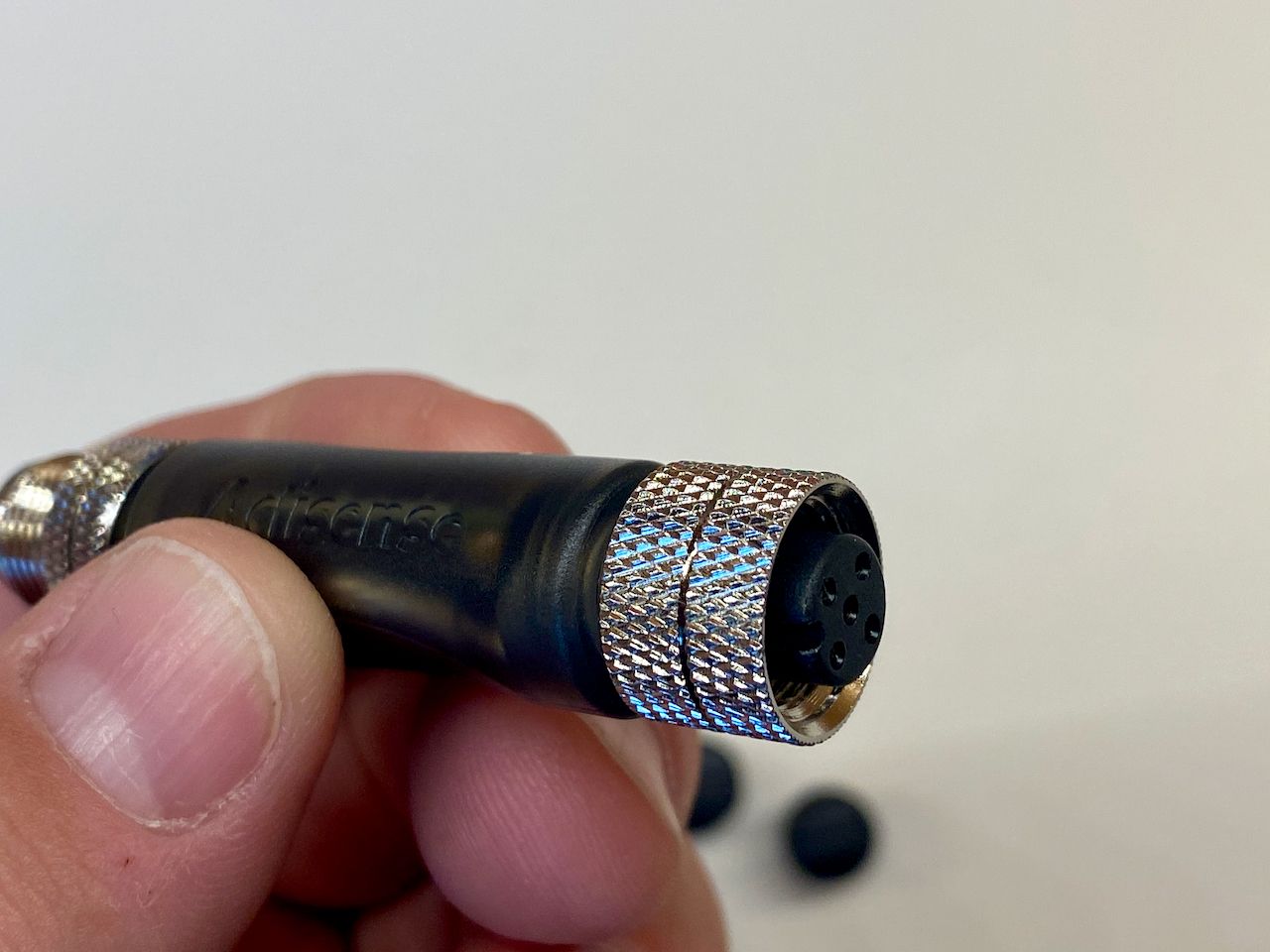
No more searching for the terminator that is female or male – now you can just uncap the end that matches, and plug it in. I don't know why someone hasn't done this before, but it sure saves scurrying around looking for the right one!
Installation
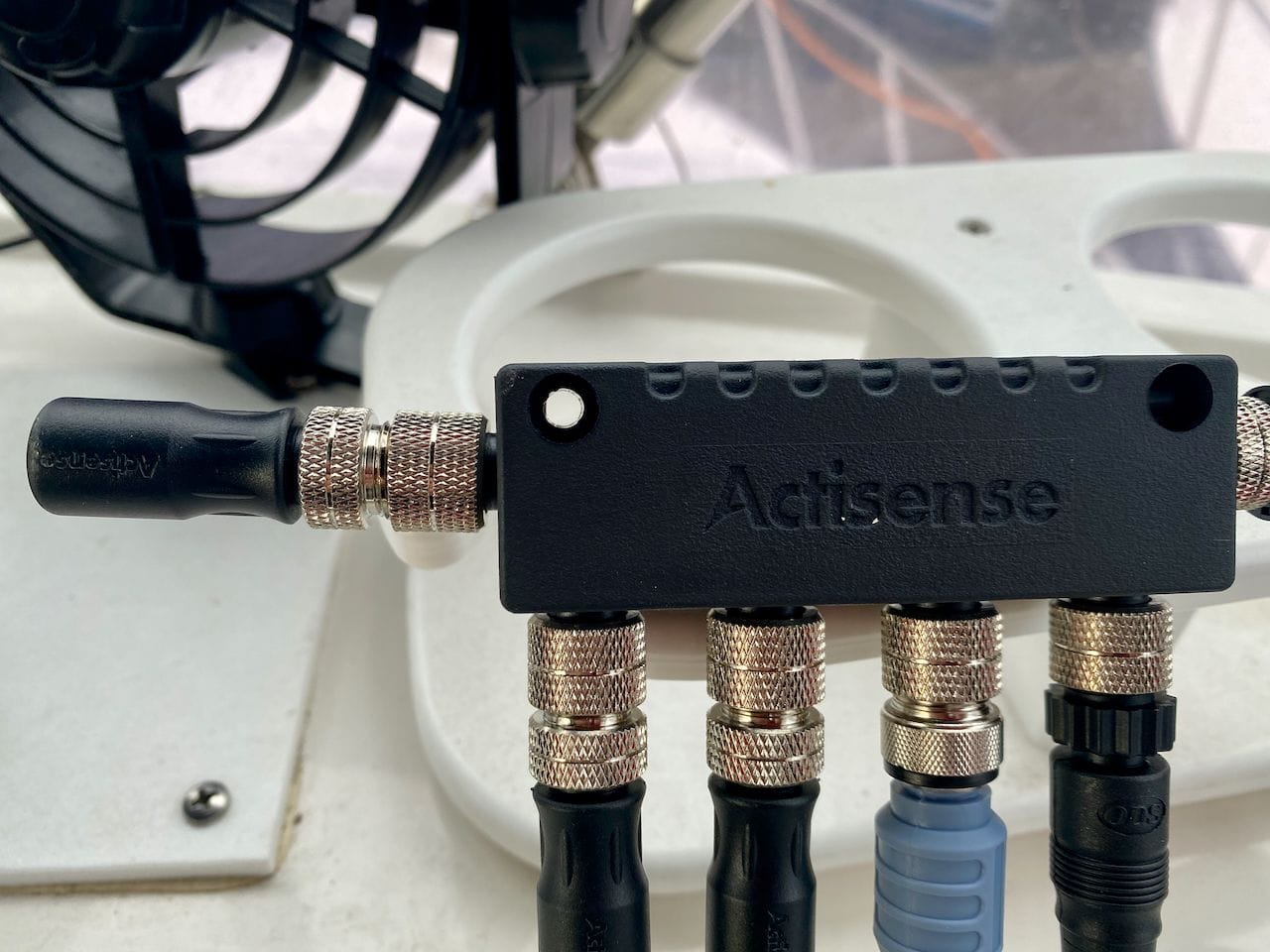
For the last 10 years or so, I have used Maretron cabling (pre-made and raw cable + field installed ends) and their taps, drop ends, and other pieces. When I re-did Rendezvous network after purchasing her, I chose to use some Actisense products including their wonderful 4 port tap that you see above. This is one of my test networks that I use for things I don't trust yet, and it has a standard terminator in the upper left of the picture.
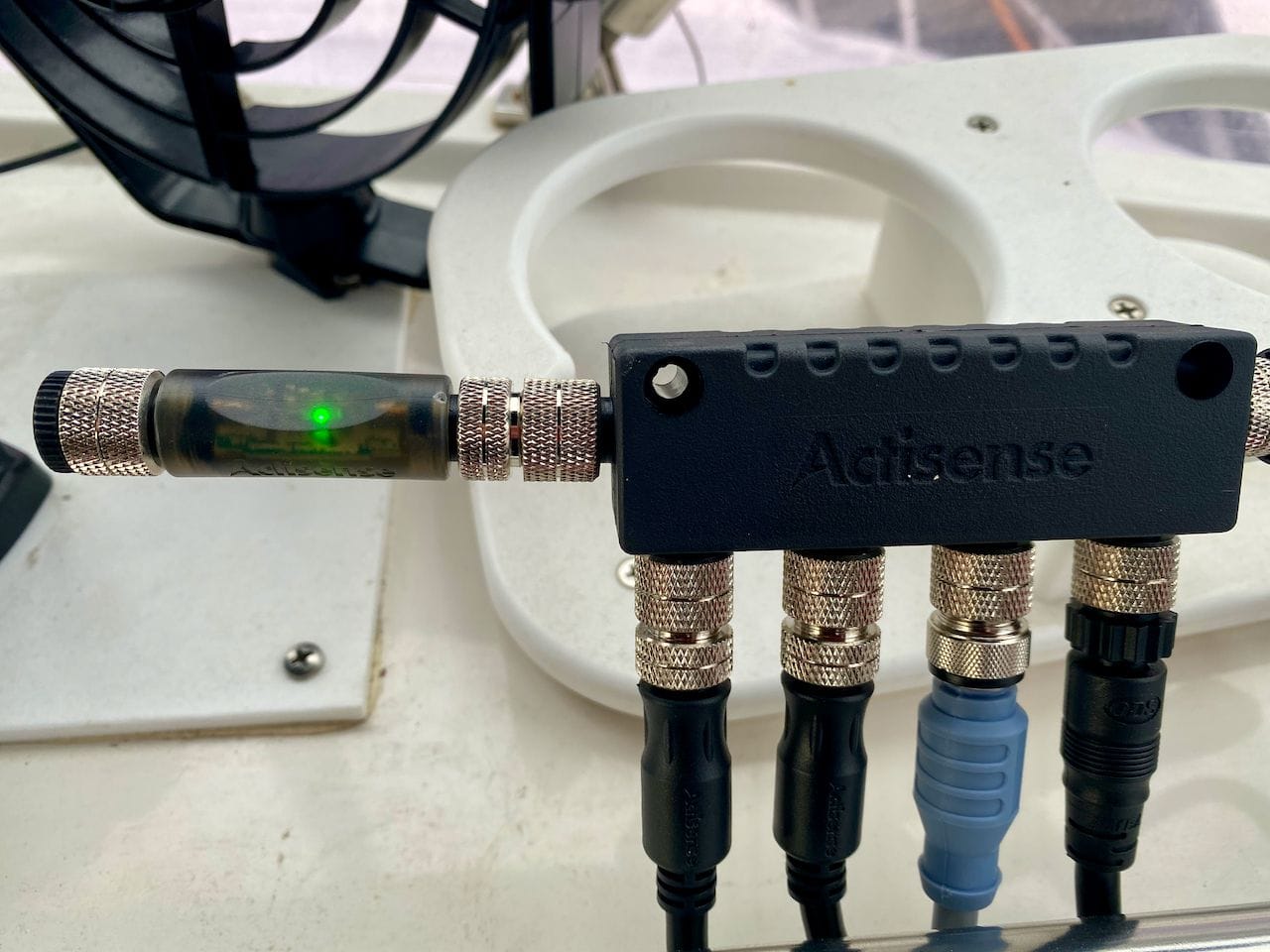
You can see I've replaced the traditional terminator above with the new universal one. It's just a bit bigger than the older one, and of course has a nice green glowing light indicating I have power and that the bus is terminated.
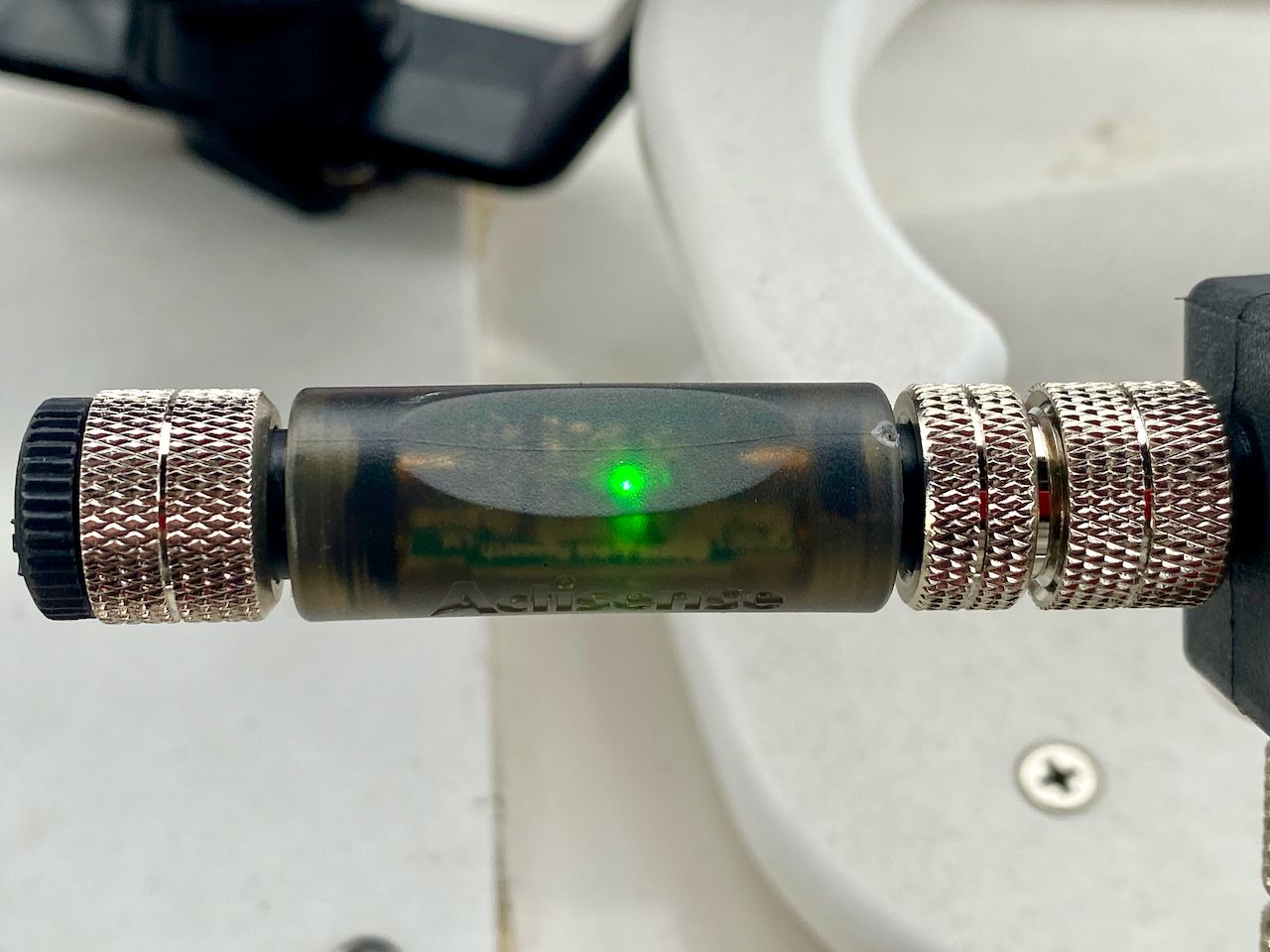
I really like the idea of a visual indicator telling you that bus voltage is acceptable, as well as indicating that the bus is terminated. That it is universal is even one step better, and makes this a no-brainer on just about any NMEA 2000 network.
It's not as sexy as a new chart plotter or satellite compass, but the network that keeps all that sort of stuff connected is just as important. Being able to see at a glance that things are OK is super convenient.
Archived Comments
These are read only comments from the old system. Scroll down to participate in SeaBits Discussions, our new interactive forum attached to each article.
mscientist
December 7, 2020 at 5:18 am
Any idea who sells these online? Can’t find it anywhere.
- Steve Mitchell
December 7, 2020 at 5:29 am
I provided a link to NavStore further up in the article, if you’re in the US. Gemeco is the main reseller in the US and they could also probably track down more vendors, assuming you’re in the US.
Ben Ellison
December 8, 2020 at 3:30 pm
I too have found it useful for troubleshooting and, as usual for the A2K line, beautifully made. Also worth noting that it can serve as an inline terminator, which means a TER-U can end a network’s backbone but you can connect a drop cable (maximum 6m/19.6ft) and device to the other end.
BoatGuyBill
December 15, 2020 at 4:18 pm
Just got mine in the mail! I’m excited to give it a try. Maybe my small project of “is it right” will quickly become a make it right job!
Scott C
May 17, 2021 at 5:37 pm
Was wondering if anyone had any input on two edges cases that I’ve been curious about, both involving ‘unused taps’.
The first is a not fully populating a mutliport tap (eg 1 in, 1 out, + 4 device drops) such as the actisense 4 port tap. I assume you wouldn’t need a terminator on each unused port (eg in & out are connected to the backbone, 2 of 4 device ports connected to drops and devices) because effectively the the unused ports are ON the signal wires, and don’t have enough length to cause a meaningful reflection.
The second scenario is an evolution of the first, where the unused drop not has a drop cable attached to it. In this case I can imagine the length of the drop cable coming off the multiport is long enough to cause a reflection issue, and this a terminator should probably be used. But if there really is only supposed to be 2 terminators on a proper NMEA2k network, would the third cause a problem? My college level RF is pretty rusty for things like signal reflection and terminators.
Steve, back in the day I believe Grace had a ‘debug’ NMEA2k port in your electronics panel, did you have issues with that drop (populated or unpopulated) cause network issues?
Appreciate your time and sorry to ‘dig up an old thread’ as it were and not thinking to ask the question first time I read this
- Steve Mitchell
July 15, 2021 at 11:26 am
Terminators are meant for the extreme ends of a bus only, not open ports. A NMEA 2000 network should only ever have two of them, period. Adding any more will cause all sorts of issues, and is actually pretty common to see in incorrectly setup systems.
Open or spare ports are not really connected to anything – they’re just extra wire hanging out waiting for something to be plugged in. I’m not sure what you mean by reflection, but there’s really not anything wrong or bad with having extras – I have many for expansion and such.


